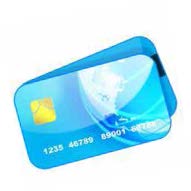Link(s) to the Saskatchewan Mathematics Curriculum:
- Expand and demonstrate understanding of the addition, subtraction, multiplication, and division of decimals to greater numbers of decimal places, and the order of operations.
- Expand and demonstrate an understanding of percent to include fractional percents between 1% and 100%.
Brief Overview of the Lesson:
The students will discuss the pros and cons of using a credit card. The teacher will demonstrate how to calculate interest annually. The students will be assigned a credit card worksheet of math problems to solve in pairs.
Estimated Time Required for Implementation:
One class period
Materials Needed:
Copies of the worksheet provided
Suggested Implementation Strategy:
- Write the following statement on the board before the students arrive.
It’s much less expensive to save regularly for an item than to buy it on credit. Credit card debt spends future income. Making credit card payments, with interest being charged to you, provides less money now to spend, save, invest, and donate. With credit cards, often you have to pay for items already bought in the past that may have already been used up or discarded.
- Ask the students to read it and explain what this statement means.
- Ask if this statement is true: Why do people have so many credit cards?
- Ask if there is ever a time when using a credit card is better than paying cash.
- Give them this scenario:
A man borrows $1,000 using a credit card at an annual rate of 23%. If he only pays the minimum amount required each month of $19.18, how long do think it would take him to pay it all back? (almost 32 years!)
- Do a sample question calculating interest with the whole class to make sure they understand what “interest rate annually” means.
Sample problem: John bought a new BBQ for $399 + tax (13%). The interest rate the company charges is 23% annually. If he pays off this debt in one payment what will be the final cost of the BBQ at the end of the year?
- Hand out copies of the Math Problems worksheet and tell the class to answer the questions.
Options for Consideration:
- The teacher may want to discuss what the term “credit rating” means, and how it can affect a person’s ability to borrow money.
Evaluation:
- Assess what was learned in the discussions.
- Mark the worksheets.
Extended Learning Opportunities:
- http://senseanddollars.thinkport.org/games/home.html
Let students play this internet game called “Just Charge It” to see the real cost of credit. Also at this site let them read “The Scoop on Credit” to learn more about how costly using credit can be.
- Ask the students to research and compare the interest rates of different credit cards.
Articles:
“CREDIT” Problems
1. Brandon paid for his vacation using his credit card, which charges 21% annually. The total cost of the trip was $1349. His credit card charges no interest if he pays the total balance before the monthly due date. If he pays it all off at the end of the month, how much will he owe? Show your calculations.
2. Max borrowed $1500 using a credit card at an annual interest rate of 22%. How much interest will he owe after 2 years? Show your calculations.
3. Rachel needs a new computer. “Computer Mart” is selling it for $599 at an interest rate of 10% annually. “Electronics Warehouse” has the same computer for $549, with an interest rate of 13% annually. Assuming it will take her one year to complete pay off her debt, where should she buy it? Show your calculations.
4. Amy wants to buy a wide-screen TV that sells for $2,000 cash. She will make a down payment of $800 and monthly payments of $200. If the annual interest rate is 18%, what is the cost of buying the TV? How long will it take her to pay off her debt? Show your calculations.
5. Sanjay has seen a new bed that he would like to buy that will cost him $629 + tax if he pays cash. The $629 in his bank account earns him 2% annually. If he puts the entire cost of the bed on his store credit card, he will pay no taxes. The rate of interest on his credit card is 18% annually. The taxes (HST) are 13%. Assuming he would pay off his credit card in one year, should he pay cash or use his credit card? Show your calculations.





